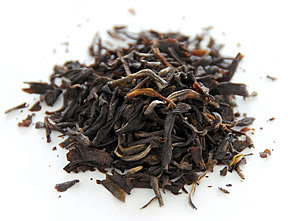A very commonly known beverage “Tea” is consumed by most of the people as their morning beverage or used in gatherings and welcoming guests. There are various types of teas available in the market. All tea comes from the leaves of Camellia Sinensis plant. Different methods and styles of processing produce different varieties of teas. There are five basic types of tea, Black, White, Green, Oolong and Pu’erh. There are five basic steps involved in tea processing, Plucking, Withering, Rolling, Oxidizing and Drying which we will discuss in detail in our other blog.
Black Tea
Amongst all the tea, black tea offers strongest flavor and greatest astringency in some cases. Complete fermentation is desirable in processing of black tea with complete oxidation of the flavanol. It involves all five basic steps for processing. It is completely made within a day. Black teas are generally consumed with milk and sugar and are most popular bases for iced tea.
White Tea
The name White Tea is derived from the fuzzy white “down” that appears on unopened or recently open buds, the newly grown bud on tea bush. This is the most delicate variety of tea due to minimal processing. White is plucked from bush and allowed to wither dry. These leaves are quickly dried and are not allowed to oxidize as long as leaves plucked for green or black tea production. The minimal processing and low oxidation results in most delicate tea in flavor and aroma which produces pale green or yellow liquor.
Green Tea
It is plucked, withered and rolled without oxidation of flavanol, which is prevented by applying heat. Leaves are stemmed or pan fried to a sufficient temperature to stop the enzymatic actions to prevent the browning of leaves. Green produces green or yellow liquor due to presence of un-oxidized catechins and having vegetable like astringency.
Oolong Tea
Most time consuming tea to process having appearance and chemical composition intermediate between black and green tea. After plucking leaves are allowed to wither for 8 to 24 hours. Involve all the five basic steps for processing with partial oxidation to be done. Gentle heat is required to slow down the enzymatic reactions. 50% fermentation is only required. Oolong tea has much complex flavor with smooth and soft astringency and rich in floral and fruity flavors.
Pu’erh Tea
It is a unique kind of fermented tea that is traditionally made in Yunnan Province of China. It is usually sold in the compressed cake of tea leaves. Initial processing of Pu’erh Tea is similar to green tea but before drying it is aged either as loose-leaf or pressed into dense cake. Very old and well-stored Pu’erh Teas are considered as “living teas”, just like wine. They have woodsy and musty aroma with rich, smooth taste.






Comments
Post a Comment